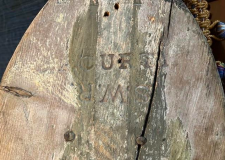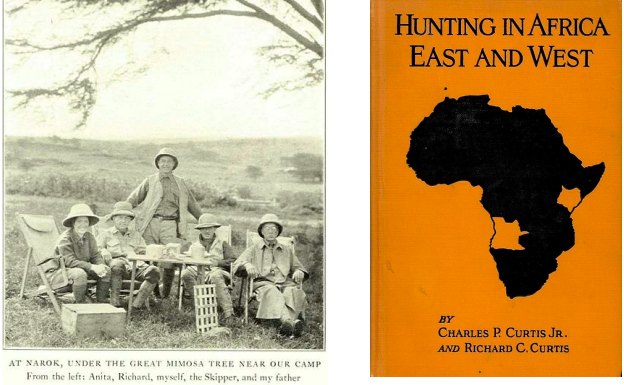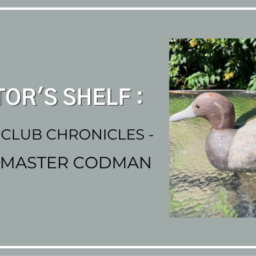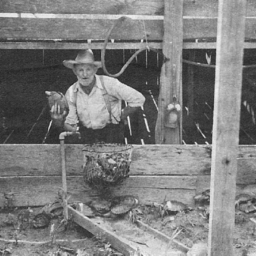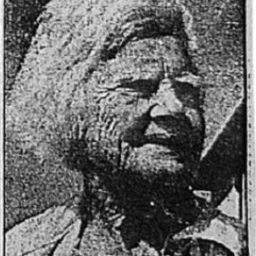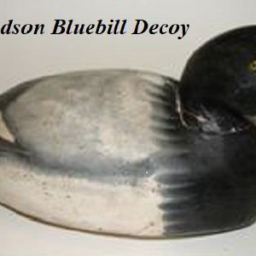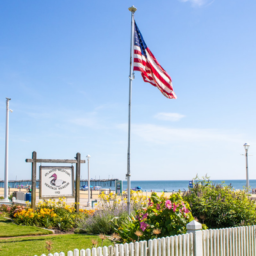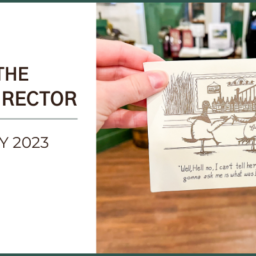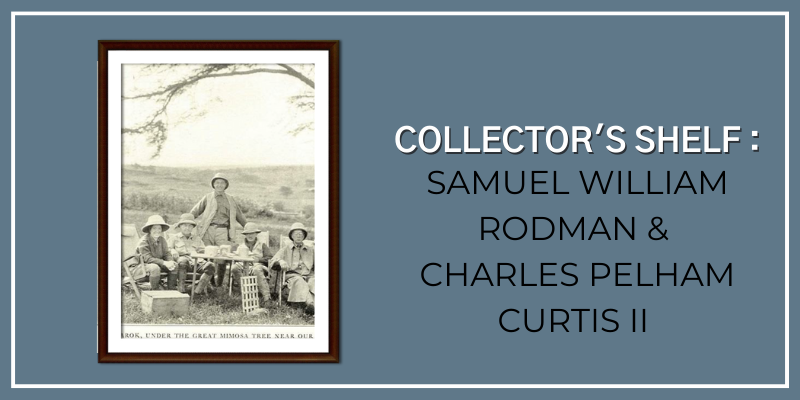
This month, we present another of what appears to be a Connecticut decoy, this time bearing two brands/stamps: “S.W.R.” and a puzzle. In the second stamp, one can make out some, but not all the letters. we have an almost imperceptible “C.” and a fully perceptible “P. CURTI.” Given the scant clues, one wonders who are these two sportsmen, how do we know they are members of the Lighthouse Club, and why might they have jointly owned this decoy. This, again, is like a jigsaw puzzle; we know where a piece goes by how it fits with pieces already in place. We can safely say “S.W.R.” is the initials of Samuel William Rodman, whose name appears in the club’s logbook. Our research also tells us Rodman had a home at 174 Beacon St. in Boston next door to the 172 Beacon St. residence of Lighthouse Club member Gardiner Greene Hammond whom we read about last month. Rodman was also uncle to another Lighthouse Club member, Dudley Leavitt Pickman, Jr. (1850-1938), a Harvard-educated lawyer (and Porcellian Club member) born into a Salem, MA merchant dynasty. As noted above, in the other brand/stamp, we can make out a faint “C.” followed by a space and “P. CURTI.” So who might this be? Once again, the logbook and what we know about these sportsmen provide the necessary clues. The logbook reveals that one Charles Pelham Curtis was a club member. Obviously, the aforementioned faint “C” is the initial for “Charles,” but the ending “S” in “CURTIS” is too faint to see. Nonetheless, we can be reasonably assured that this is our Charles Pelham Curtis. But in addition to the logbook, what we know about these sportsmen suggests why they would have jointly owned a decoy. Let’s begin with Rodman. The Rodman family was in the whaling business, operating out of Nantucket and New Bedford, MA. A number of Rodman siblings married a number of siblings from the Rotch family, interweaving two New England whaling dynasties. While they made their considerable fortunes in what many would consider the gruesome whaling business, both the Rodman’s and the Rotch’s were, somewhat incongruently, devout New England Quakers and fervent opponents of slavery. This fact provides our clue regarding the joint ownership of our decoy. Charles Pelham Curtis II was a Harvard graduate and Porcellian Club member who, after graduation, joined his father’s well-established firm and became a prominent and successful Boston lawyer. Perhaps more noteworthy, however, was a cousin, Benjamin Robbins Curtis, who practiced in Charles’ firm. Benjamin, too, graduated from Harvard and Harvard Law, and was a member of the Porcellian Club. (As noted above, Rodman’s nephew Pickman was also a Porcellian Club member. The Porcellian Club was like a Greek-letter fraternity at Harvard founded long before—in 1791—Greek fraternities came into existence. Most of the Lighthouse Club members appear to have been Harvard graduates, where they were also members of the
Porcellian Club. Because only a chosen few were punched for PC membership, those so punched all knew each other and shared a common bond.) After gaining wide recognition for his astute legal mind, Benjamin was appointed a U.S. Supreme Court Justice by President Millard Fillmore, having been recommended for that appointment by Massachusetts U.S. Senator Daniel Webster. He had the distinction of being the first Supreme Court Justice to have attended law school and earned a degree in law. But for our specific purposes, while sitting on the bench he was one of two dissenters in the infamous Dred Scott case, arguing against every element of the majority’s decision which denied emancipation for the slave Scott. Like his cousin Benjamin, it is not unreasonable to assume our Charles P. Curtis shared the abolitionist views of his fellow Lighthouse Club member Samuel W. Rodman, making them like-minded fellows in the duck blind and co-owners of our decoy. Lastly, our Charles’ son, Charles Pelham Curtis III, married a lineal descendant of our Arthur Amory’s (subject of a previous edition of our chronicles) lineal ancestor, once again keeping it all in the family the Boston Brahmin way. So here we have another decoy from the Lighthouse Club rig that was gunned over by these gilded-age sportsmen well over a hundred years ago. One is left to wonder what this and the other decoys in this collection might have heard and seen. If only we could give voice to these carved and painted blocks of wood made to mimic life… In a final note ancillary to our story, Charles Pelham Curtis III’s sons, Charles IV and Richard C. Curtis, penned a book about taking their father back to Africa on Safari, perhaps following in the footsteps of President Theodore Roosevelt (fellow Harvard grad and Porcellian Club member) whom they likely knew well since Teddy’s first cousin, Robert Barnhill Roosevelt, was also a Lighthouse Club member. As you can see in the photo on below, I was fortunate to obtain a 1925 first edition copy of that book, which I’ve yet to begin.



